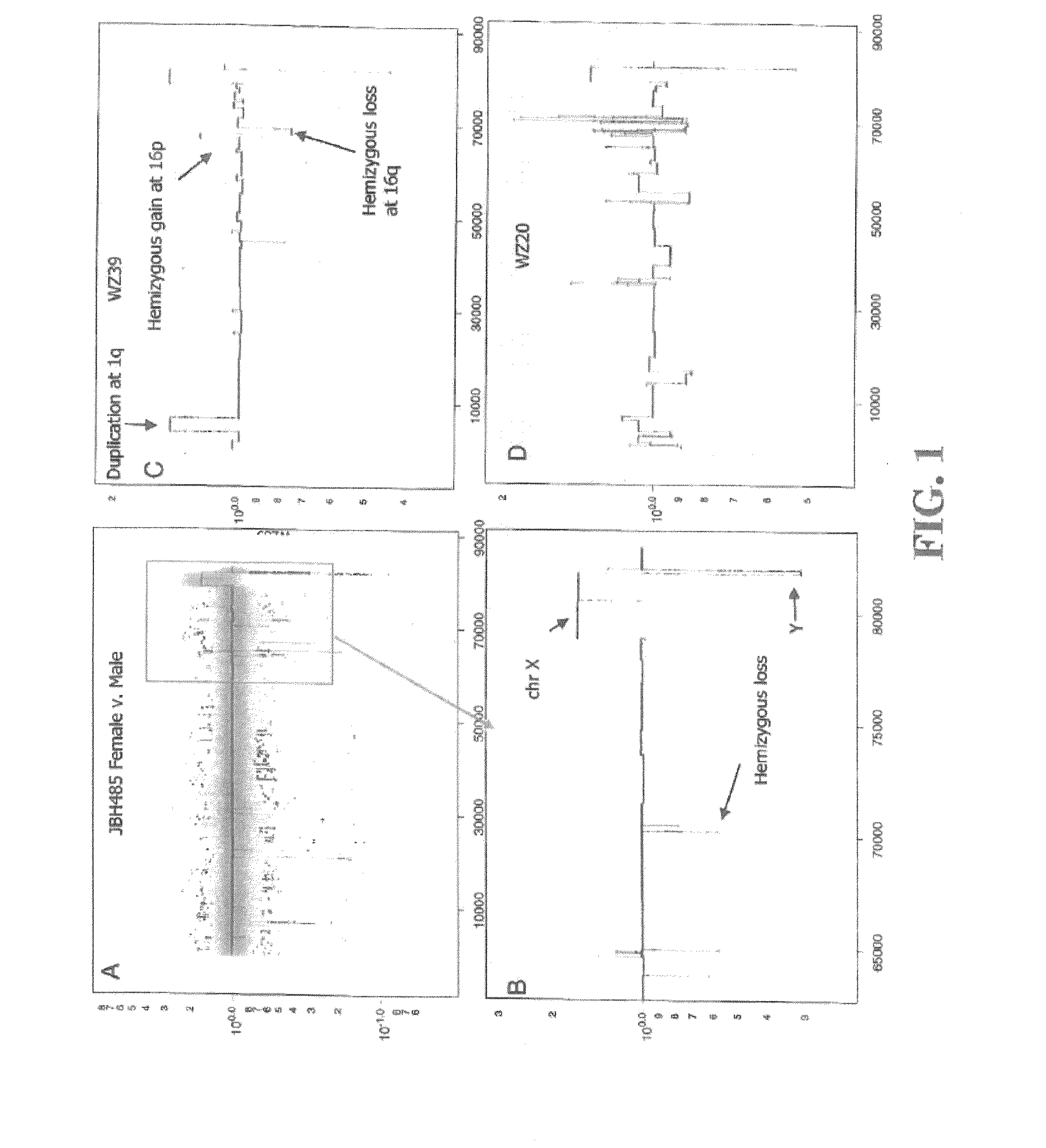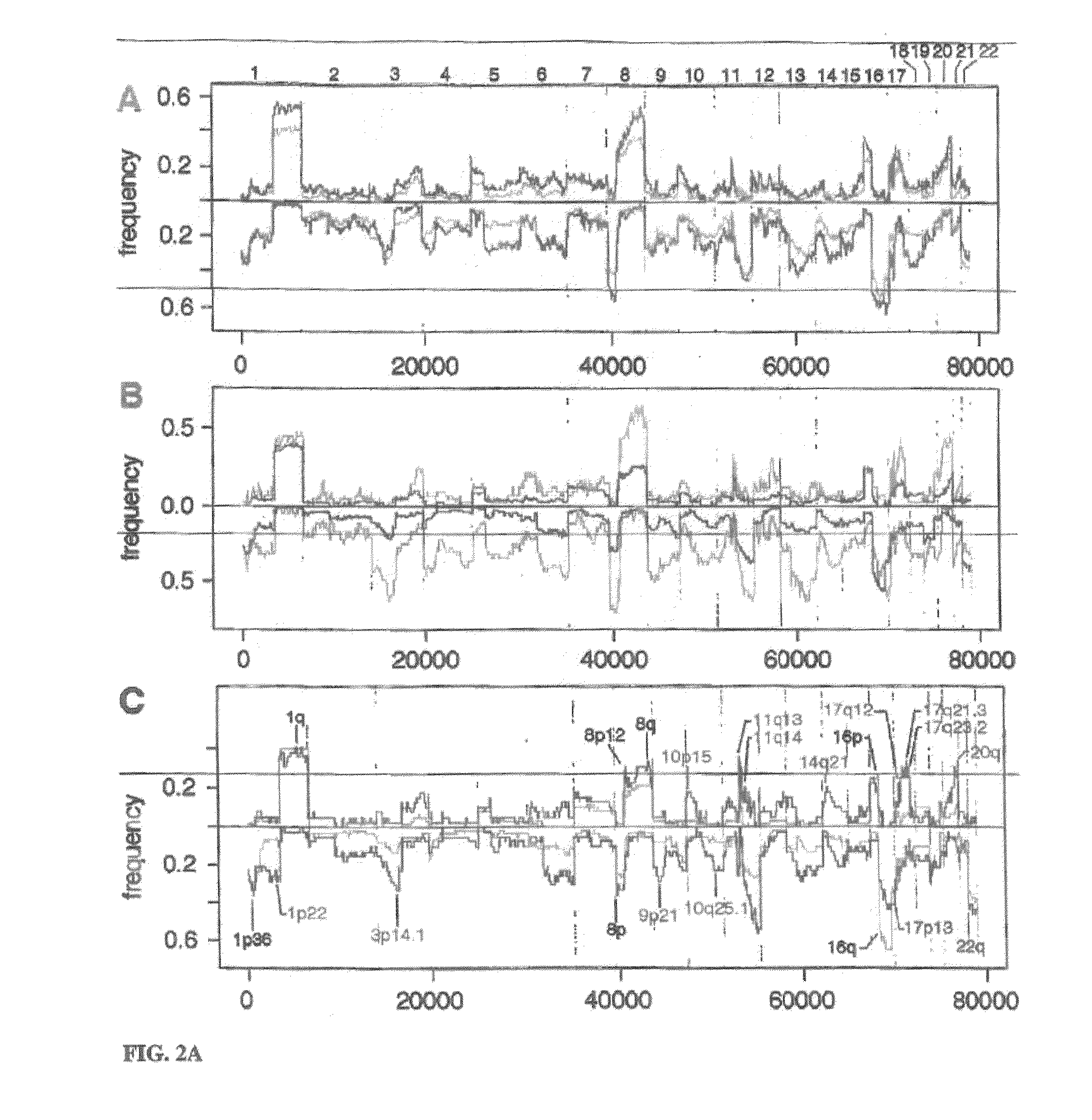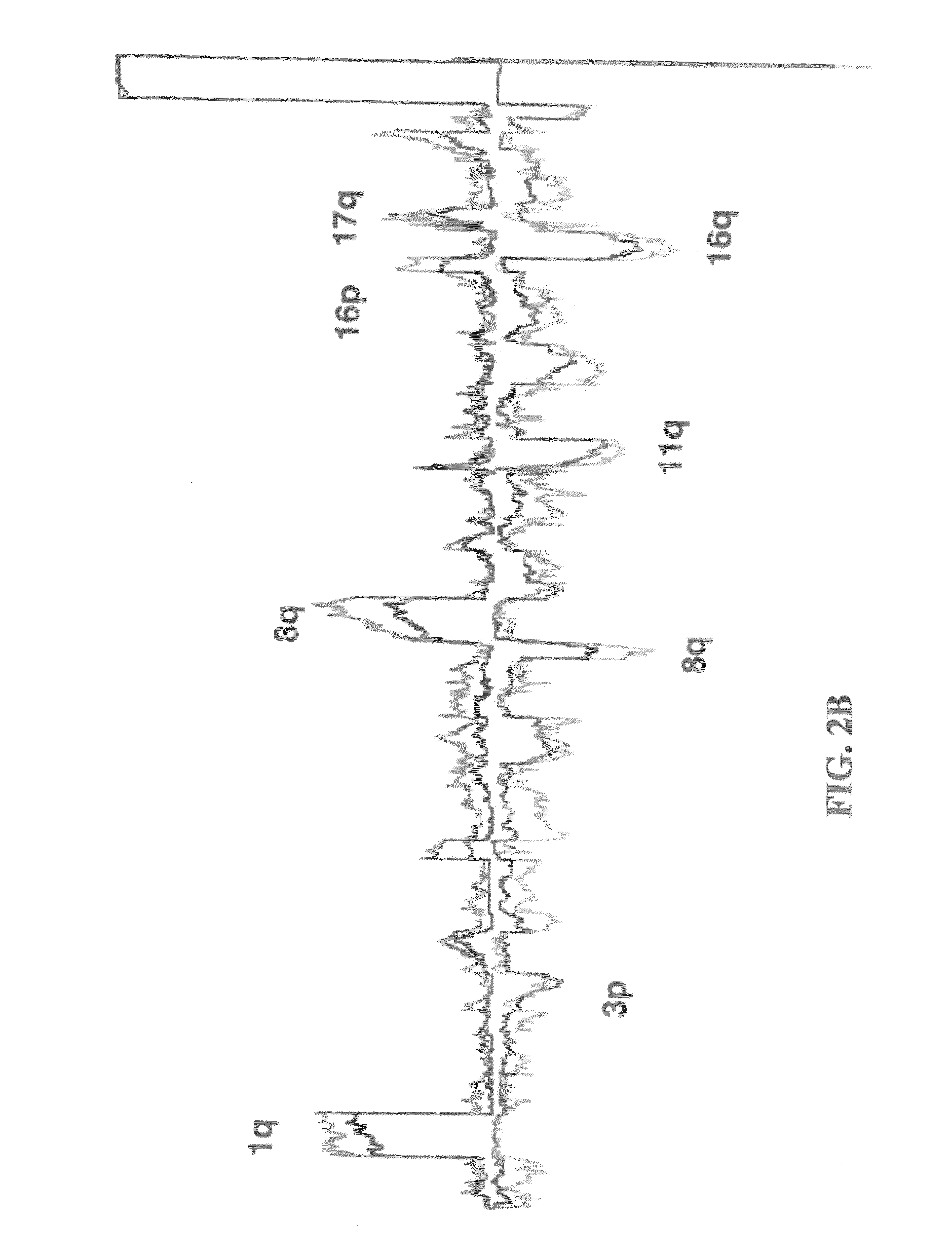Method for designing a therapeutic regimen based on probabilistic diagnosis for genetic diseases by analysis of copy number variations
- Summary
- Abstract
- Description
- Claims
- Application Information
AI Technical Summary
Benefits of technology
Problems solved by technology
Method used
Image
Examples
example 1
Breast Cancer Study and Respective Patient Populations
[0167]One goal of this study was to determine whether there were features in the genomes of tumor cells that correlated with clinical outcome in a uniform population of women with “diploid” breast cancers. This population was chosen because a significant number of cases culminate in death despite their clinical and histo-pathological parameters that would predict a favorable outcome. The subject population of 99 diploid cancers drew from a bank at the Karolinska Institute (KI), and was comprised of long term and short term survivors that were similar for node status, grade and size. For part of the analysis, additional studies in progress have been drawn upon, one using 41 aneuploid (defined as >2n DNA content, see Materials and Methods) cancers from KI, and the other using an additional 103 cancers from the Oslo Micrometastasis Study, Oslo, Norway (OMS). The latter set was not scored for ploidy and has only an average of eight y...
example 2
Breast Cancer Study: Materials and Methods
[0172]Patient Samples
[0173]A total of 140 frozen tumor specimens was selected from archives at the Cancer Center of the Karolinska Institute, Stockholm Sweden. Samples in this particular dataset were selected to represent several distinct diagnostic categories in order to populate groups for comparison by FISH and ROMA. Samples were grouped according to ploidy, tumor size, grade and 7-year patient survival. From a total of 5782 cases, analysed for ploidy at the division for Cellular and Molecular Pathology at the Karolinska Hospital at the time of primary diagnosis (1987-1991), 1601 pseudo-diploids were available with complete clinical information including ploidy, grade, node status and clinical followup for 14 to 18 years. Of these, 4.0% or 64 cases were node-negative, non-survivors at 7 years and 8.0% or 127 cases were node positive non-survivors. Of these, 47 cases were locally available as frozen tissue and made up the group of node-neg...
example 3
Processing Individual Cancer Genomes
[0199]All breast cancer genomes of the present study were examined with ROMA an array based hybridization method that utilizes genomic complexity reduction based on representations. In the present case, comparative hybridization using BglII representations were performed and arrays of 85,000 oligonucleotide (50-mer) probes with a Poisson distribution throughout the genome and a mean inter-probe distance of 35 kb (Lucito et al., 2003). In all cases, tumor DNA from a patient was compared to a standard unrelated male human genome. Hybridizations were performed in duplicate with color-reversal, and data was rendered as normalized ratios of probe hybridization intensity of tumor to normal.
[0200]The normalized ratios are influenced by many factors, including the signal-to-noise characteristics that differ for each probe, sequence polymorphisms in the genomes that affect the BglII representation, DNA degradation of the sample, and other variation in reag...
PUM
| Property | Measurement | Unit |
|---|---|---|
| Fraction | aaaaa | aaaaa |
| Fraction | aaaaa | aaaaa |
| Fraction | aaaaa | aaaaa |
Abstract
Description
Claims
Application Information
 Login to View More
Login to View More - R&D
- Intellectual Property
- Life Sciences
- Materials
- Tech Scout
- Unparalleled Data Quality
- Higher Quality Content
- 60% Fewer Hallucinations
Browse by: Latest US Patents, China's latest patents, Technical Efficacy Thesaurus, Application Domain, Technology Topic, Popular Technical Reports.
© 2025 PatSnap. All rights reserved.Legal|Privacy policy|Modern Slavery Act Transparency Statement|Sitemap|About US| Contact US: help@patsnap.com



